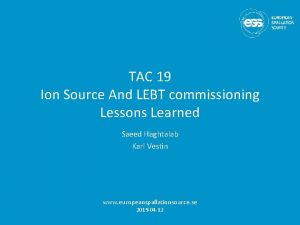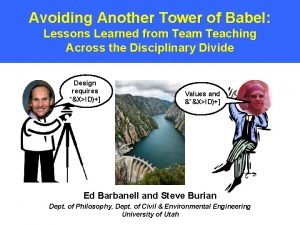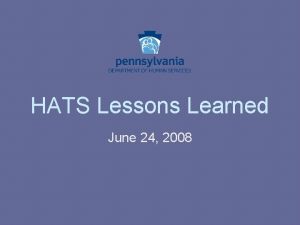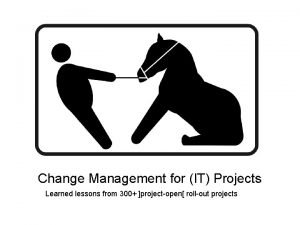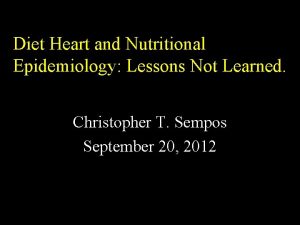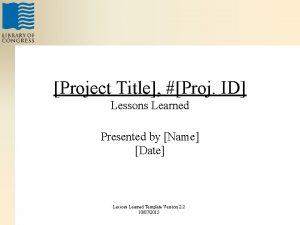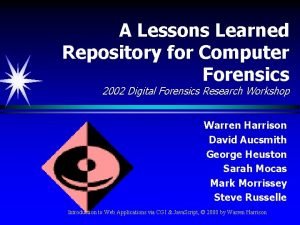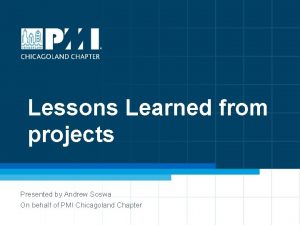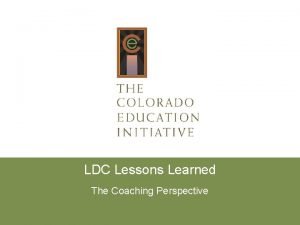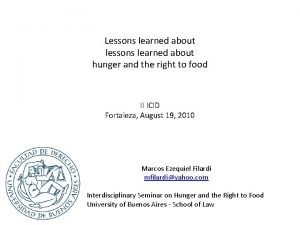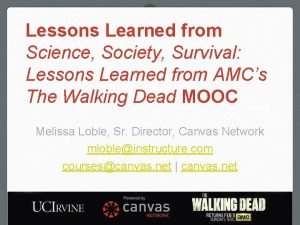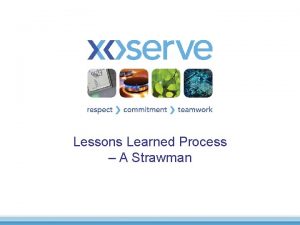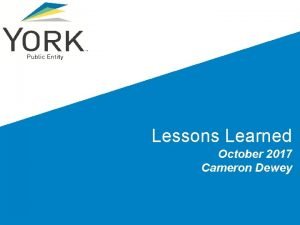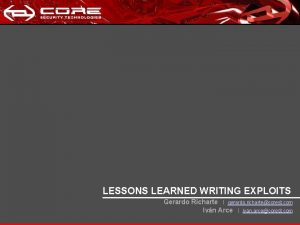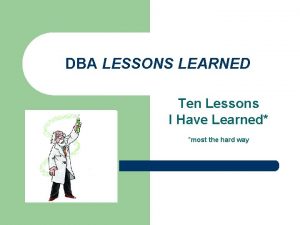Surviving an IT Audit Five Lessons Learned Merritt










- Slides: 10


Surviving an IT Audit: Five Lessons Learned Merritt Maxim CA Inc.

IT Audit Background • An IT audit should focus on determining risks that are relevant to information assets, and assess controls in order to reduce or mitigate these risks • IT Audit generally covers: • Hardware, operating systems, network, security • In addition, there are specialized audits for applications: • Application audits review controls in 3 rd party, custom and home-grown software

IT Audits are Crucial Survey of SOX filers who reported “material weaknesses, ” IT controls was the lead culprit • IT controls (27%) • Revenue (18%) • Taxes (11%) • Financial reporting and close (10%) • Of respondents who reported a material weaknesses, what was source of material weakness?

• Lesson #1: Implement a Fixed Audit Schedule and Stick to it • Mc. Afee IT Audit Survey (spring 2008) • Approx. 25% of respondents ran audits on an ad-hoc basis • Why? • Relying on informal ad-hoc IT audits almost guarantees that audits will always receive lower priority against other projects • Fixed schedule instill discipline in organization • Alignment of IT audits with financial audits can identify and remediate items of mutual interest • Fixed audit schedule enables better project and budget planning • No missed audits because of budget overruns

• Lesson #2: Automate Wherever Possible • Data collection • Mc. Afee IT Audit Survey-spring 2008 • 50%+ of respondents still using spreadsheets for collection • Control Testing • Why? • Increase operational inefficiency • Reduce time and effort for testing • High effort and unplanned work around audits indicated a poorlycontrolled environment • Increase accuracy • Builds repeatable and more sustainable processes • Reduces the impact of future IT audits • Automation is one area where technology can yield big benefits

• Lesson #3: Utilize Existing Frameworks • Aim to map IT controls against multiple regulations to a foundational standard • ISO 27001 is a good example • Seek single and comprehensive policies that can apply across regulations • Why? • Consolidates the number of required separate audits • Test controls once, but have test apply against multiple regulations • Generates substantial compliance savings

• Lesson #4: Adopt Risk Based Approach • Utilize risk assessments to: • To identify the level of uncontrolled risk • To appraise an organization’s internal controls • Leveraging risk and control objectives • Group similar controls together Why? • Prioritize which areas should be reviewed 1 st • Even if single control fails, you can prove that: • “I'm still adequately managing this risk" or • “I'm achieving the overall objective of this control. "

• Lesson #5: Track Regulatory Environment • External environment is dynamic • Regulations are updated/modified • Tracking changes (and the impact on your organization) takes time & $$ • Why? • Want agility to adjust to changes • Do not want to get caught off guard

Thank You Merritt. maxim@ca. com 508 -628 -8597
 Tac lessons learned
Tac lessons learned Lessons learned from the tower of babel
Lessons learned from the tower of babel Lessons learned from king josiah
Lessons learned from king josiah Lessons learned ground rules
Lessons learned ground rules Change management lessons learned
Change management lessons learned Lessons not learned in blood
Lessons not learned in blood Risk management lessons learned
Risk management lessons learned Lessons learned repository
Lessons learned repository Lesson learned register
Lesson learned register What we can learn from ants
What we can learn from ants Workday claremont colleges
Workday claremont colleges
